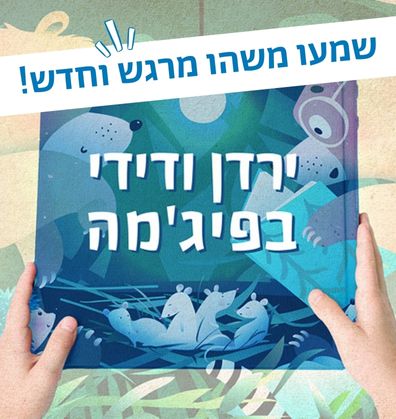כִּשּׁוּרֵי חַיִּים
ערבות הדדית
ערבות הדדית מבטאת את האחריות הקהילה כלפי כל אחד מחבריה, ושל כל אחד מחבריה כלפי האחרים. הערבות ההדדית פועמת ורוחשת גם בעולמם של ילדים וילדות, בתוך קבוצת השווים שלהם ומחוצה לה, במעגלי קהילה שונים. ספרים על ערבות הדדית, על מעשים קטנים כגדולים ועל אחריות חברתית, יכולים להרחיב את ארגז הכלים הרגשי והחברתי של הילדים ולתרום רבות לערך העצמי שלהם ולתחושת השייכות לקבוצת השווים ולקהילה.
סְּפָרִים
Book-Related Family Activities

Tip for Family Reading
After reading this book, you should discuss how the characters felt and coped with the situations in the story. You can discuss how you were inspired by them. Children identify with the characters, will be exposed to different perspectives, and will learn from them about emotions and behaviors that are familiar to them from their own lives.

It was a good idea to let him go first
After reading the story, you can discuss, share, and ask: How do we feel when we wait in line? Have we ever felt that our turn was more urgent than the others’? In your opinion, how did Dog feel when the others were considerate toward him? How did Monkey and the others who were waiting in line feel after giving up their turn? Try to recall an incident together in which you were considerate toward others, or others were considerate toward you.

Who is next in line?
Monkey, Giraffe, Elephant, and Alligator try to establish a principle that would determine the order among those waiting in line. They can inspire you to play an amusing game with your whole family, during which you can form a line while following a different order each time. For instance, you can stand according to your age from youngest to oldest, or by the color of your shirts from the lightest to the darkest, or by how much you love ice cream. You can come up with different, amusing characteristics together and find out who is next in line this time?

Waiting around and having fun
How does Monkey end up passing the time while waiting in line? He chats with those who are waiting alongside him, coming up with ideas on how to determine the order, and meeting new friends. You can also think together and raise ideas that would help you pass the time while you are waiting for something. You can come up with a funny song to sing while you wait, or a game involving moving your fingers, or even prepare aids that will help you pass the time – a storybook, coloring book, puzzle, or squishy ball, or any other amusing idea with which you can come up.
QR Code
Would you like to find out what Monkey sounds like? Or what Dr. Tzviya sounds like? Scan the code and listen to the story.
A discussion: What if I were… Mom
Which roles does each member of your household have? Who would you want to take over from? This book could inspire you to imagine switching roles within your home: What would your child do if they were to take over from Grandpa? What would Grandpa do if he took over from Mom? And how would you be able to help one another?
Listening to the story
What do you play in a parade? And what do musical instruments in a band sound like? You can find out all the answers to these questions and more if you listen to this book by scanning the code.
A game of “my occupation”
Am I a physician or a clown? Can you guess my occupation? Take turns choosing a profession and acting it out for the other players to guess. If a player’s profession is a little hard to guess, you could give them a clue.
Going into the illustrations
Which character in this book would you like to take over from? You may enjoy looking through it, choosing a character you would like to replace, and share your thoughts with one another: Would you want to take over from the baker? Or play in the parade?
A game of “Find me!”
The main characters in this book are a hedgehog, rabbit and mouse. But other animals also appear in the illustrations –
Can you find them?
How many animals have you found?
“Did you find me in the illustrations?”

Discussion
The family in this book is rushing to make the train and celebrate Grandpa Dov’s birthday, and yet its members remember to be considerate toward others, and care for animals and the environment. Perhaps you would like to try and discuss what being considerate means – how would you like others to be considerate of you? Who could you offer to help in your immediate surroundings or family? Which actions can you take to make the older members of your family happy?

Playing "fast or slow?"
You may enjoy playing a game called “fast or slow”: take turns to choose a certain action and tell the other players to perform it quickly or slowly. For instance, clap your hands… quickly, and now… slowly; sing a song extra slowly, and then super-fast! After you’ve played, you may want to discuss and discover what you enjoyed doing quickly, and what was more fun to do slowly.
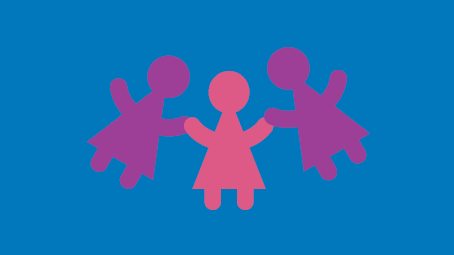
Hidden illustrations
The illustrations in this book are extremely detailed. How about choosing your favorite page, and looking for the tiny details in it? Perhaps you could take turns to ask each other whether you can spot a particular detail in the drawing: Where’s Grandpa Dov’s gift? Where’s the football? Who can find the teddy bear?

Types of…
This book specifies types of plants, toys, cats, and musical instruments. Perhaps it can inspire you to take turns choosing a subject, and having the other players list as many items associated with it as they can. You could choose topics such as clothing, friends’ names, types of toys or musical instruments.

Discussing – The giving that never ends
Annabelle was a happy child. What, do you think, made her happy? How do you feel when you give to others? Can you think of something like Annabelle’s yarn – things you can give others many times over?
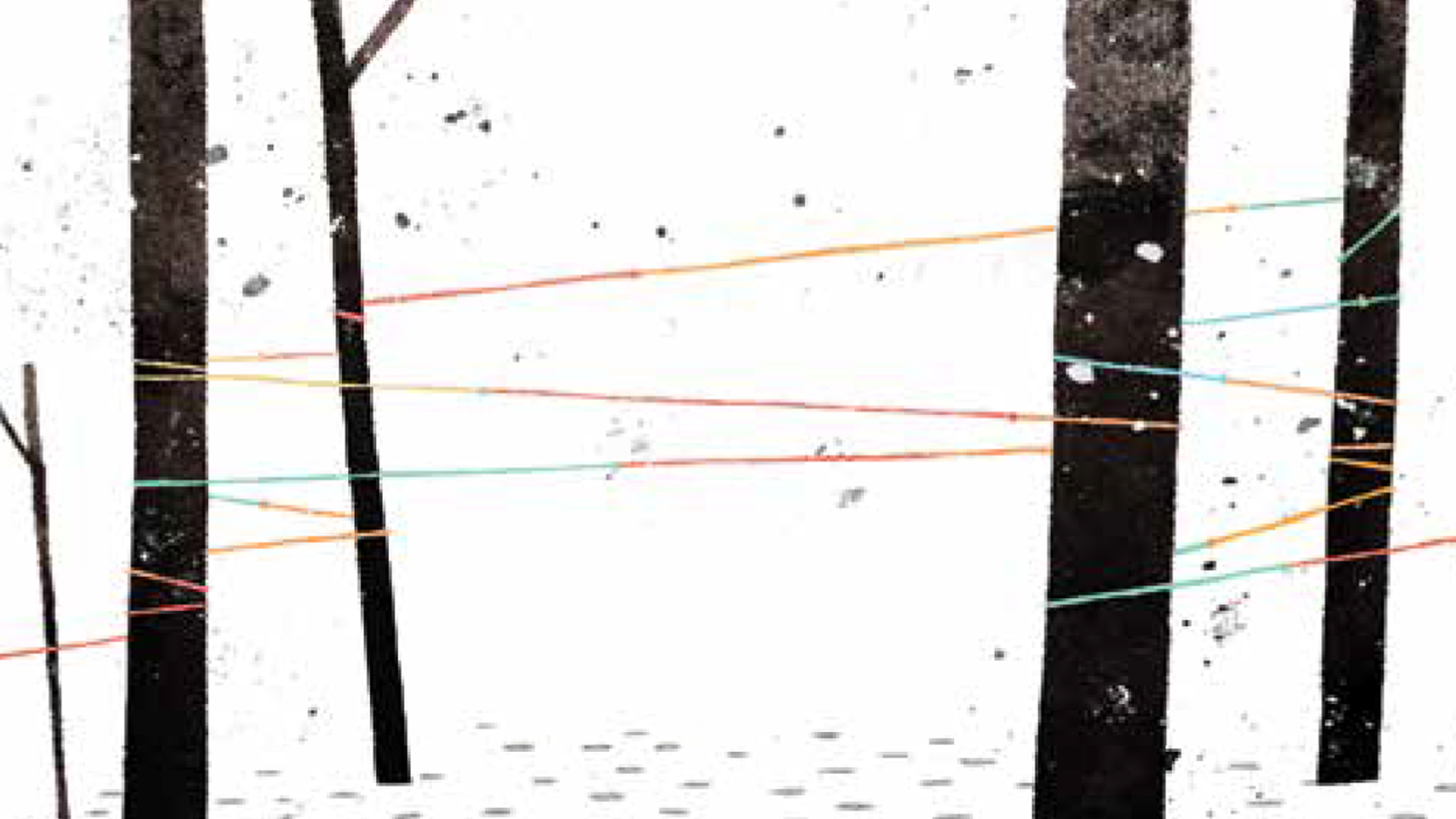
Playing – Don't touch the yarn
Yarn can be used to create a track for a single-rule game “Don’t touch the yarn!”. How do you play? Tie lots of pieces of rope, string and lace together to create long “yarn”, and wind it round the furniture and other objects in the room. Create an obstacle course that players must follow without touching the yarn: you can jump over it, crawl under it, or choose any creative way to avoid it, as long as you don’t touch it!

Doing some arts & crafts – familywear
Annabelle knit more and more colorful clothes that made all her townspeople happy. Like her, you too could create your very own attire as a family fashion statement. Think of the kind of special piece of clothing you would like to make: Should it be a certain color shirt? An interesting brooch? A bracelet, adorned hat, special socks, or other item of clothing your entire family agrees on?

Some more arts & crafts
Annabelle loves knitting. Are there any kinds of arts or crafts that both you and your child enjoy doing? Perhaps o
ne of you loves to cook, while the other is a plasticine sculptor? You may enjoy asking each family member what kind of art or craft they like to engage in, and suggest joining then to gain some hands-on experience.
Suggestions for arts & crafts activities using yarn can be found on our website and the PJLibrary Pinterest page.
You are welcome to leaf through the book
You are welcome to leaf through the book, and look at Lena Guberman’s unique illustrations closely. Make sure you read the words and signs in the illustrations too! Has anything about the illustrations made you laugh? They are all made of colorful fabrics, thread, and wool. Perhaps you would also like to look for a piece of cloth or an old sock, cut it up, glue or sew it together, to make your own special artwork.
You may want to discuss the Haruvis' demand for quiet, and their neighbors' responses with your child
You may want to discuss the Haruvis’ demand for quiet, and their neighbors’ responses with your child. Have you ever been asked to change your habits in order to be more considerate of others, such as family members or neighbors? Did that request seem reasonable or over the top? Having read the story together, you may be reminded of your own neighbors. Who have you not seen in a while, and would like to invite over to your house?
Perhaps you would like to take a walk around the neighborhood
Perhaps you would like to take a walk around the neighborhood. What does it look like? Who are your neighbors, and do you know them all? Do you spend time together, or help each other out? You may want to draw or make a model of your neighborhood together, and add those who live in each apartment or house.
Would you like to play "silence"?
Would you like to play “silence”? You’re welcome to whisper to one another, play in silence, walk on tiptoes, eat quietly, and even try to laugh without making a sound. Would you have passed the Haruvis’ “quiet neighbor test”?
You may enjoy discussing the following with your family or sharing it with your neighbors:
You may enjoy discussing the following with your family or sharing it with your neighbors: Does anything require improvement or repair in your shared space? You could initiate some neighborhood activities, such as decorating the shared stairwell, planting a community garden, or helping one another in your community. Put together an action plan, and get started.
Laughter is an easy and fun way of coping, it makes you happy, and can even be contagious
Laughter is an easy and fun way of coping, it makes you happy, and can even be contagious. Perhaps you would like to try laughing while making every possible sound: Hoo hoo hoo, Ho ho ho, Ha ha ha, He he he, Hee hee hee. Start laughing and change sounds each time. Did your laughter “roll and tickle”? Did it lift your mood?
Proposed Family Activities:
- You may want to sit and leaf through the book together. Perhaps you would like to ask your child to look for the ten sailors in the illustrations, and try to identify each one using their description. Did you find any of the illustrations funny? You may want to ask your child to tell the story in their own words, according to the order of the illustrations.
- You may want to stop reading at the point where the fisherman sailor chooses to drill a hole in his cabin, and ask your child what they think will happen next. You could suggest that your child draw a picture of the ship filling up with water and fish.
- In the first few pages of the book, the sailors are depicted with a rope connecting them. What do you think binds the sailors together? What connects you to your family? You may want to tell your children about the expression “All the People of Israel are responsible for one another”, and think about how we each contribute to the wellbeing of others.
- Each sailor on the ship has a role to play, and each depends upon the others. You could take a large sheet of paper and draw a family drawing together in which each family member chooses just one color. In order to create a colorful drawing, the entire family must cooperate, each member using one color and coordinating their actions with all the others.
- What sort of story is created when the entire family writes it together, one part after the next? Probably a very amusing one. You may enjoy starting to write a story, stopping after one line, and letting other family members write the rest in turn, adding more directions, and letting the plot evolve.
- Perhaps you might like to put a jigsaw puzzle together as a family. Once you are done, take one piece out. What does the puzzle look like with one piece missing?
- Each of us can contribute to the growth or collapse of a building. You may enjoy playing with blocks, wooden bricks, or magnets, and building a tall tower together. Once it is up, try removing pieces from it without letting it collapse.
Enjoy reading and discussing the book together!
The following story was inspired by the Midrash in Leviticus Rabba 4:6:
Family activities:
Leaf through the pages with your child and look for instances of giving in the book. Who gives openly and who gives in secret? The title of the Hebrew version of the story is “The Hidden Circle”. Why do you think the author chose this title?
Draw your child’s attention to the items on each page that are filled in with color. Why do you think the illustrator chose to highlight these pictures?
The facial expressions depicted in the illustrations convey the characters’ emotions (e.g. – the face of the child watching the old man sleeping, or the face of the old man eating the muffin). How can we “read” others’ feelings by observing their facial expressions?
You can play the game “Identify the Feeling” with your child. Make an expression that conveys a certain emotion and let your child guess which emotion that is. Then change roles and try guessing the feelings your child is conveying.
Look at the illustration of the old man crumbling a bit of his muffin for the birds. In the Talmud the rabbinical sages say: “Even a poor man who himself survives on charity should give charity” (Gittin, pg. 7b). What is the logic of this commandment?
“A Circle of Friends” is a story about everyday actions that are familiar to all of us. In the book of Deuteronomy (chapter 30, verses 10-14) it is written: “This mitzvah… is not in the heavens… or across the ocean… Rather (it) is very, very close to you, upon your lips and in your heart to perform it”.
In other words, good deeds are within all of our reach. Even young children can perform mitzvot, or good deeds. Take the time to think together with your children about some of the good deeds they have done (and things they would like others to do for them), for example: sharing toys with a friend, helping their siblings or friends at school…
At the end of the book the boy receives a surprising gift that brings him joy. Draw a big, yellow sunflower together. On each petal draw a gift that appears in the story. In your opinion, does the cycle of giving end with the blossoming sunflower outside the boy’s window? Invent together with your child a continuation to the story and illustrate it.

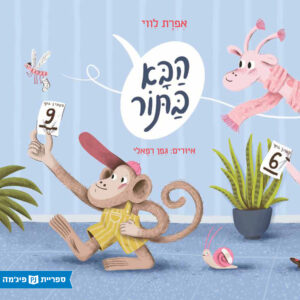 Next in Line
Next in Line 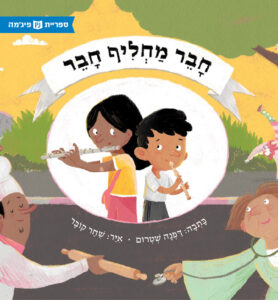 One Friend Takes Over for Another
One Friend Takes Over for Another 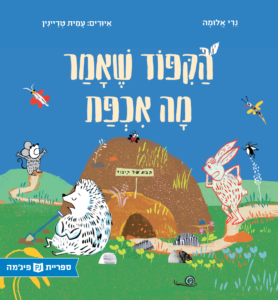 The Hedgehog Who Said: Who Cares?
The Hedgehog Who Said: Who Cares? 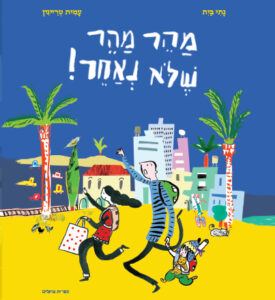 Hurry Up!
Hurry Up! 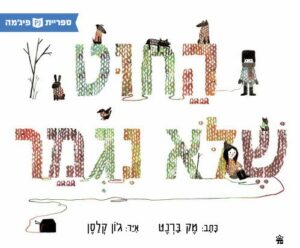 Extra Yarn
Extra Yarn 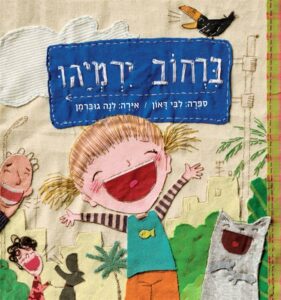 Yirmiyahu Street
Yirmiyahu Street 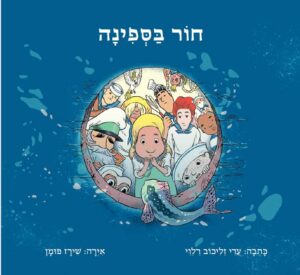 A Hole in the Ship
A Hole in the Ship 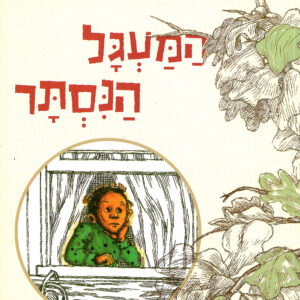 A Circle of Friends
A Circle of Friends 




